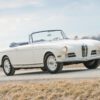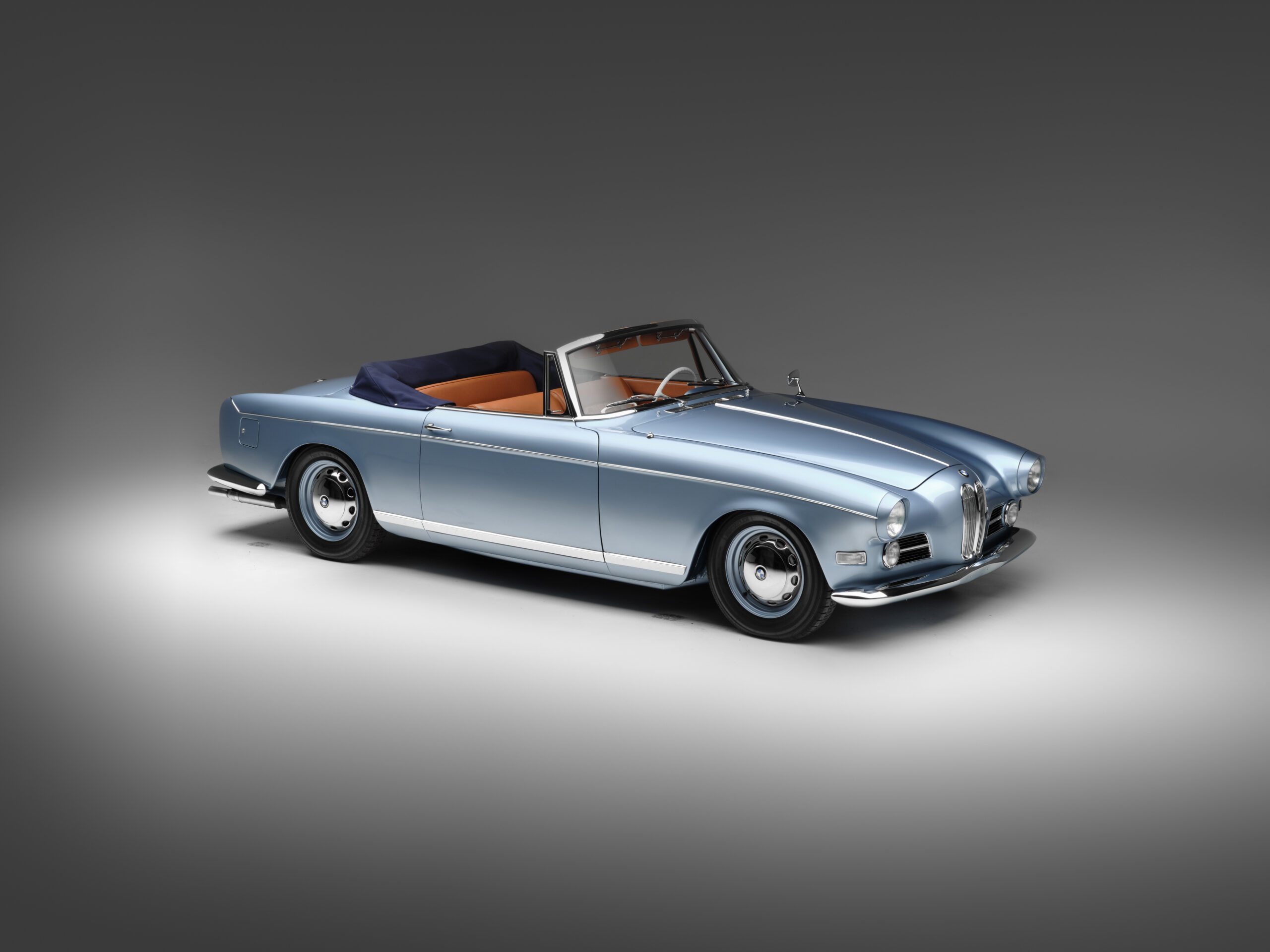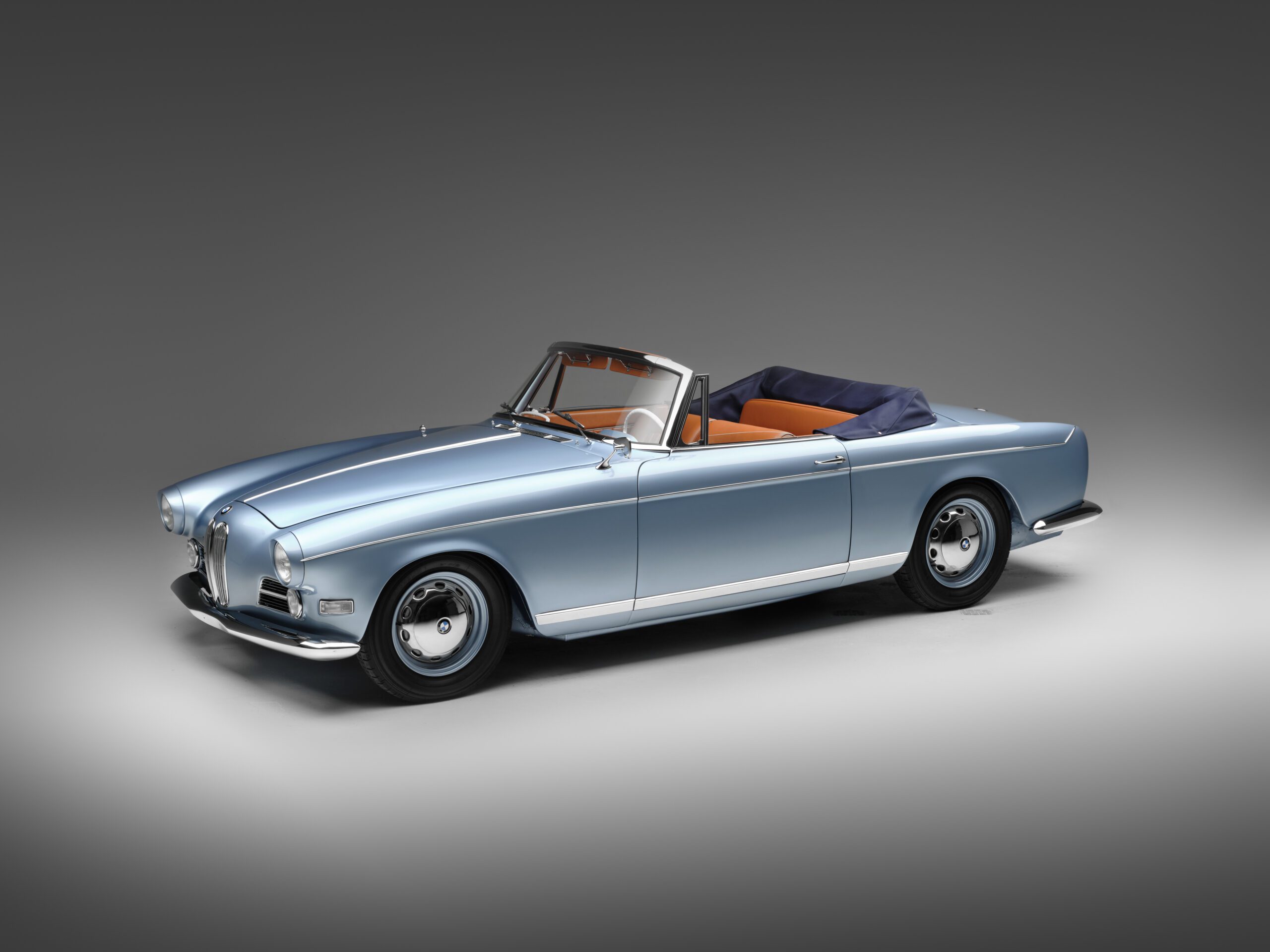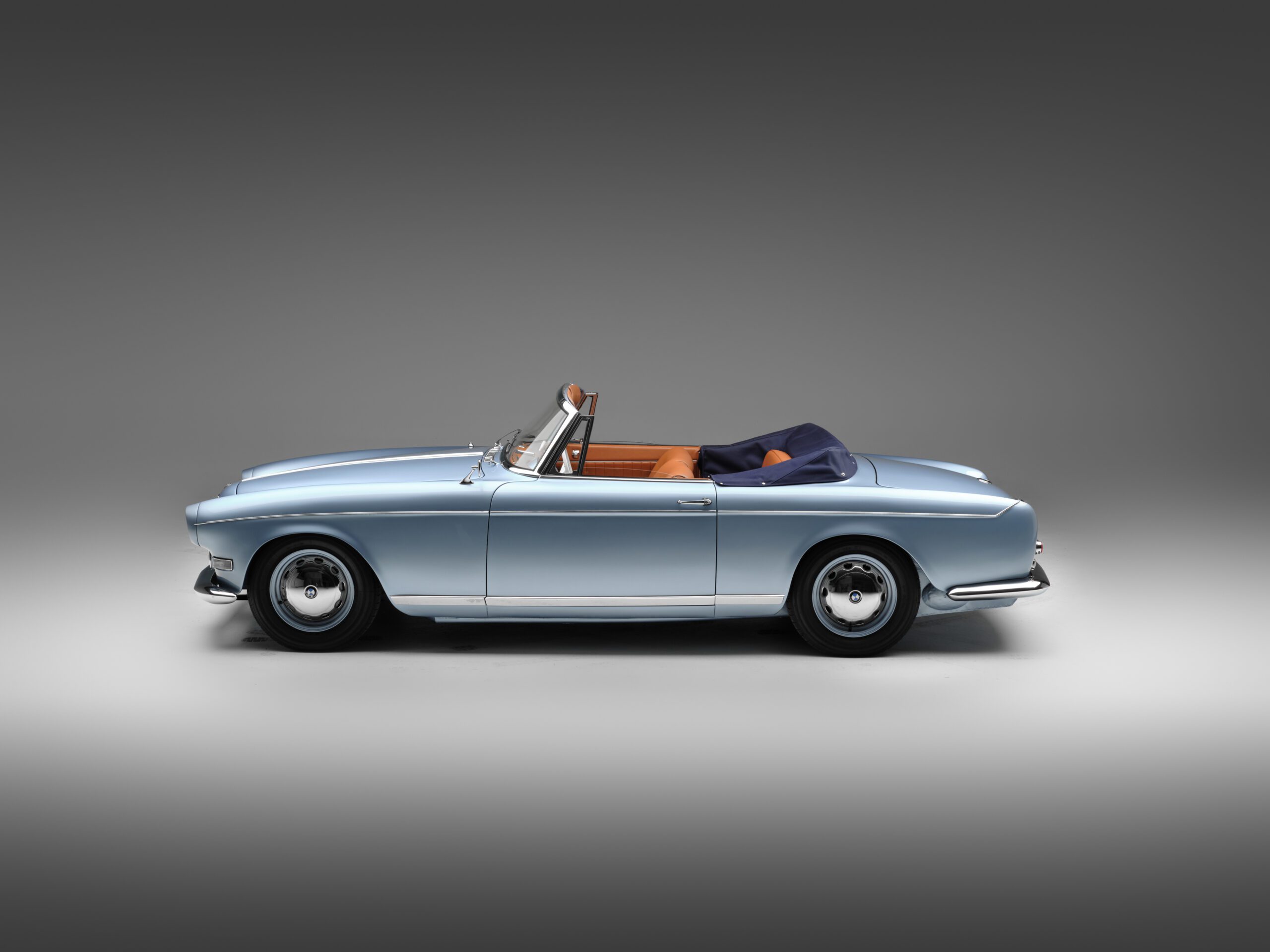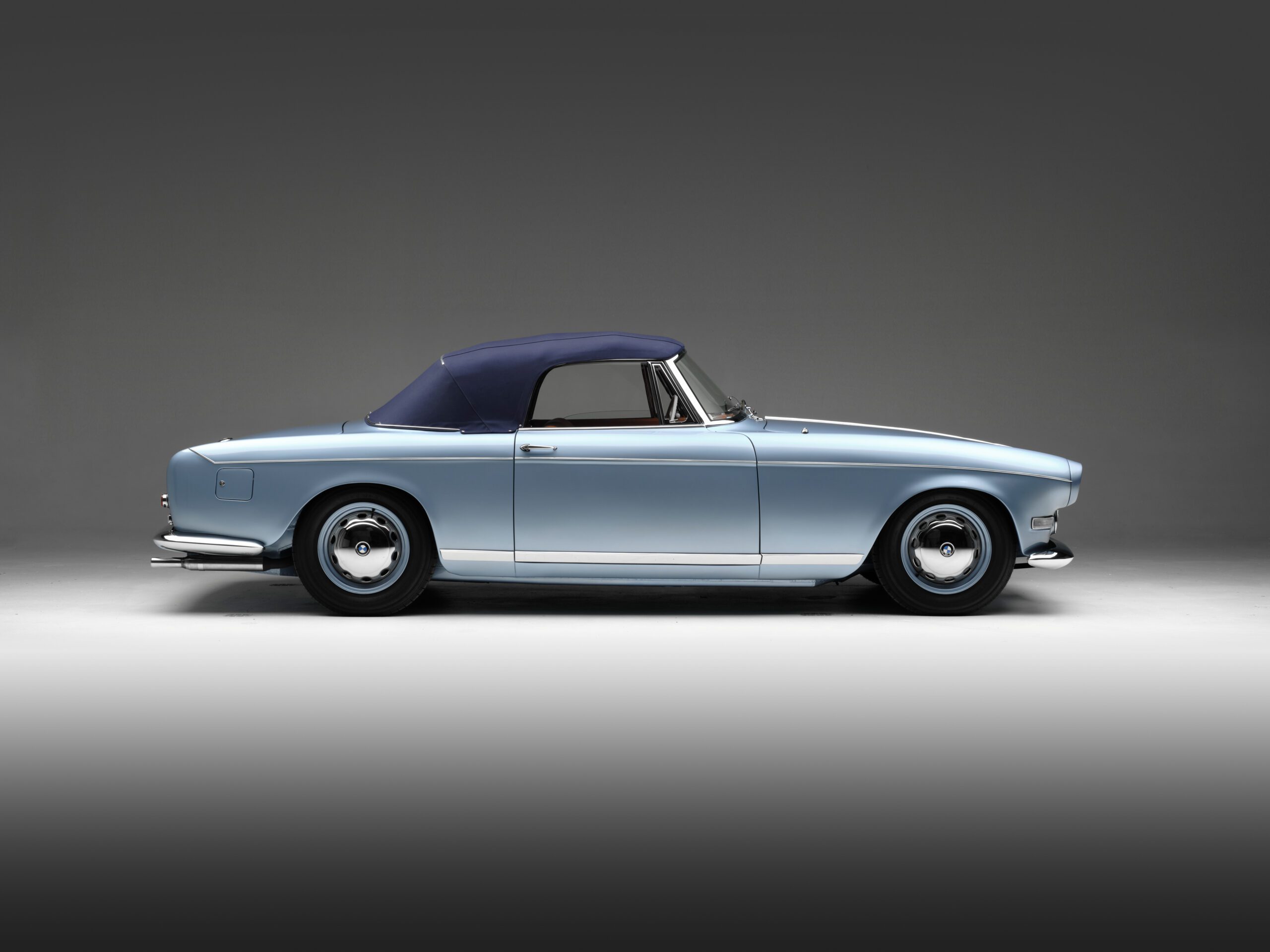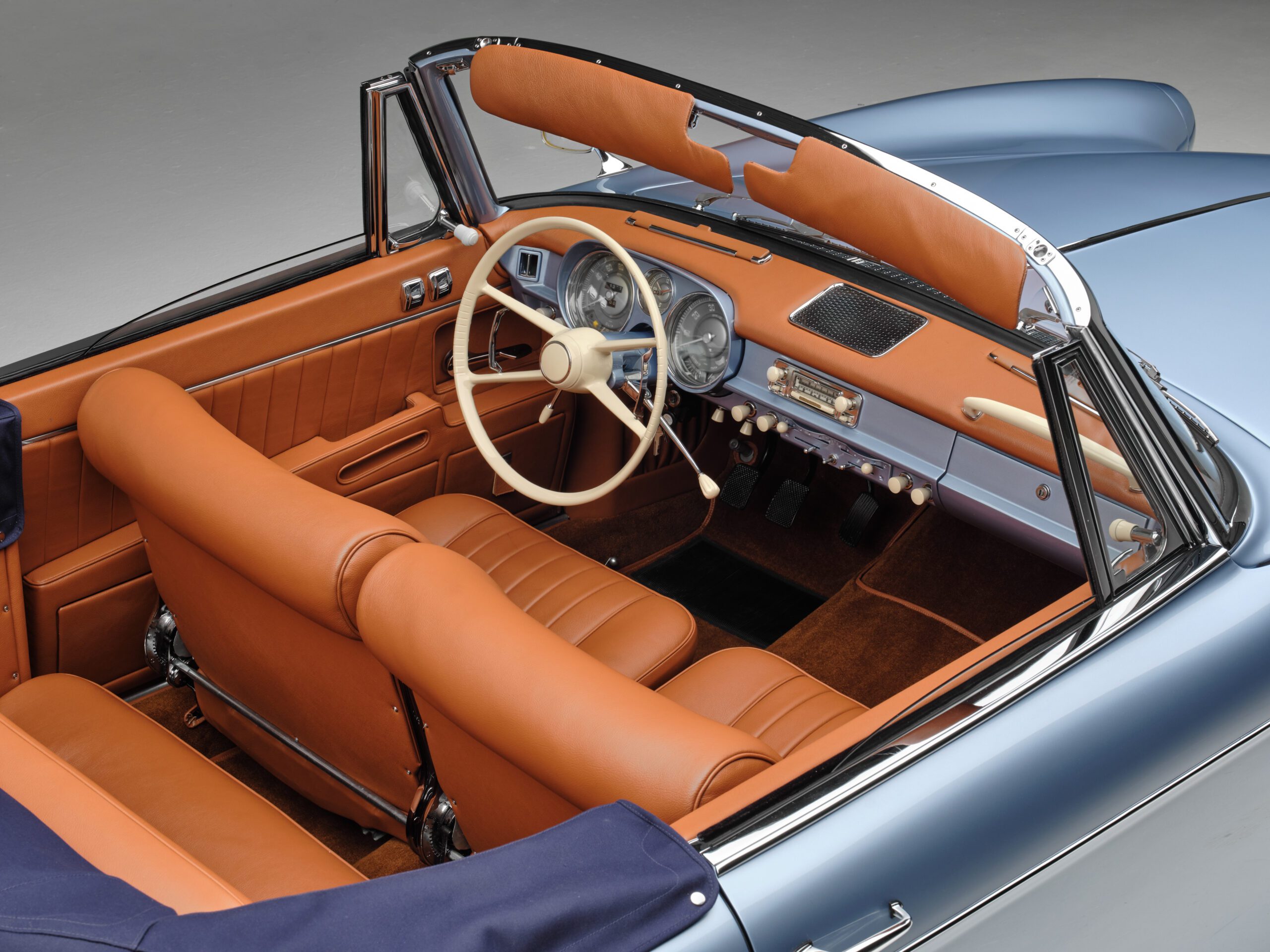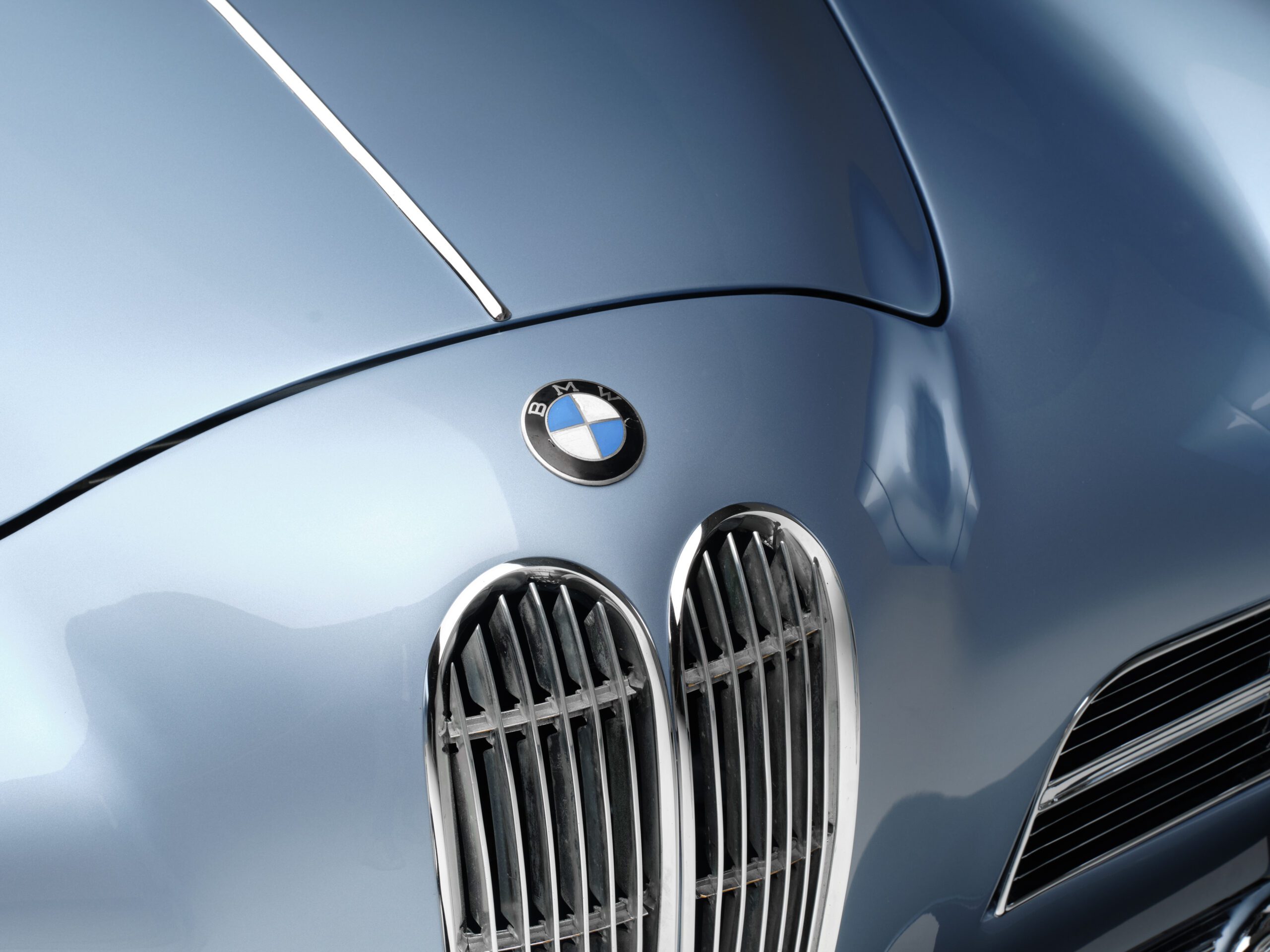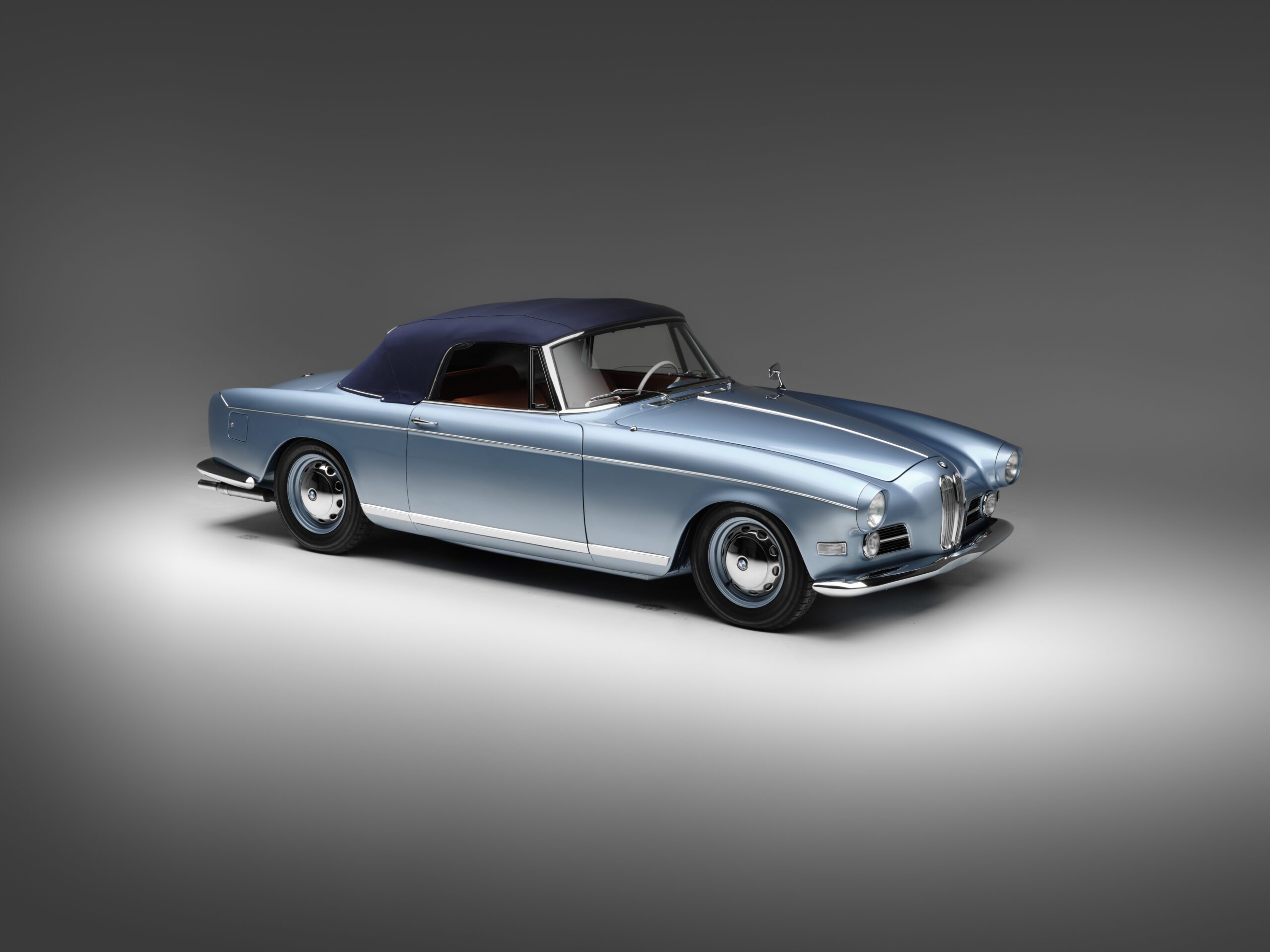BMW’s Munich factory, heavily damaged by Allied bombing, struggled with a reduced workforce producing household items, agricultural machinery, bicycles, and railway brake sets. BMW motorcycles reappeared in 1948, and it wasn’t until 1952 that the first post-war BMW car, the 501 luxury saloon, was introduced.
The 501, launched in 1951, initially used a pre-war six-cylinder engine, receiving a significant upgrade with a 2.6-litre V8 in 1954. Designed by Alfred Böning and inspired by American V8s, this engine was made from aluminium alloy.
By the end of 1955, a 3.2-litre version emerged, changing the model designation to ‘502’. The potential of the V8 as a sports car engine led to the creation of the 503 and 507 models, encouraged by Max Hoffman and styled by Count Albrecht von Goertz.
Debuting at the 1955 Frankfurt Auto Show, the 503, with its elegant design and 140bhp V8, reached a top speed of 118mph and impressed even Pinin Farina. Built as both a coupé and a cabriolet, only 344 units of the 503 were produced between 1956 and 1960, attracting a select clientele, including notable figures from the motor sporting world.
Photo Source: RM Sotheby’s



